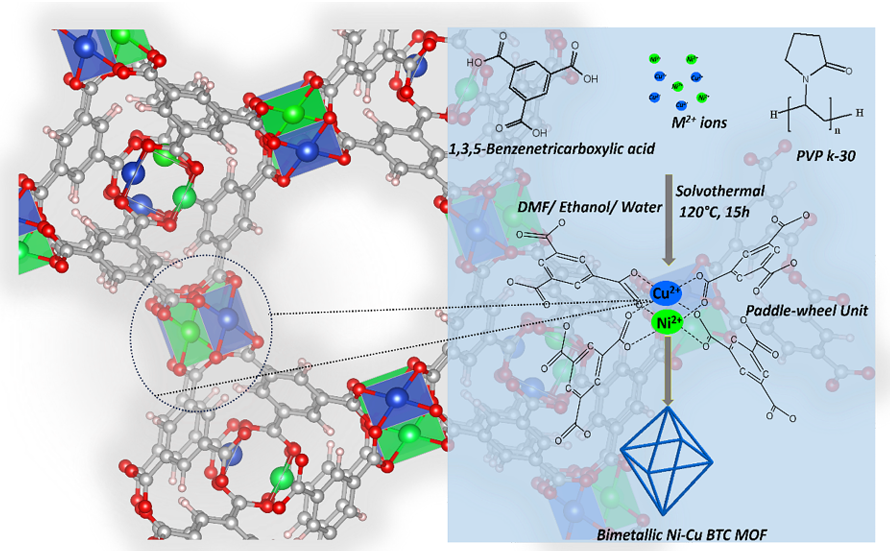| (2025.06) Reconstructed structures of bimetallic Ni-Cu metal-organic frameworks for efficient ammonia electro-oxidation: unveiling the role of different polycarboxylate linkers | |||||
| 작성자 | 관리자 | 작성일 | 2025-06-16 | 조회수 | 35 |
|---|---|---|---|---|---|
|
· 논문명 : Reconstructed structures of bimetallic Ni-Cu metal-organic frameworks for efficient ammonia electro -oxidation: unveiling the role of different polycarboxylate linkers · 저 자 : Pragyan Sharma, Tahereh Mahvelati-Shamsabadi, Thanh Truong Dang, Seung Hyun Hur, Sung Gu Kang, Jin Suk Chung * · 게재지 : Chemical Engineering Journal (2025, 513, 162852) · 초록 Herein, we describe the structural impact of the pre-catalysts bimetallic Ni-Cu metal–organic frameworks (MOFs) on the properties of reconstructed structures and ammonia electro-oxidation reaction (AOR). Three Ni-Cu MOFs were synthesized using different organic linkers: 1,3,5-benzenetricarboxylic acid (BTC), 1,2,4,5-benzenetetracarboxylic acid (BTEC), and 1,4-benzenedicarboxylic acid (BDC) to modulate their structural properties. The octahedral Ni-Cu BTC MOF encouraged faster nucleophilic attack of OH– ions, accelerating linker substitution and rapid MOF hydrolysis. The evolution of MOFs into real active species was monitored using X-ray diffraction and X-ray photoelectron spectroscopy, revealing the in situ generation of Ni(OH) 2 and CuO, Cu(OH)2 which were transformed to Ni1-x CuxOOH at higher potential and assisted AOR. Reconstructed Ni-Cu BTC (Ni-Cu BTC-R) showcased an excellent AOR activity, manifesting a large current density of 138 mA cm2 at 0.8 V vs. Hg/HgO while achieving a minimal onset potential of 0.42 V. The catalyst exhibited a remarkable durability of 40 h, showcasing persistent AOR performance. This superior activity can be attributed to abundant Ni OOH sites in the three-dimensional framework that formed during the structural reconstruction of the pre-catalyst MOF. The practical application of Ni-Cu BTC-R was tested using in-operando gas chromatography, which revealed that the H2 production efficiency was 98.99 %.
|
|||||


